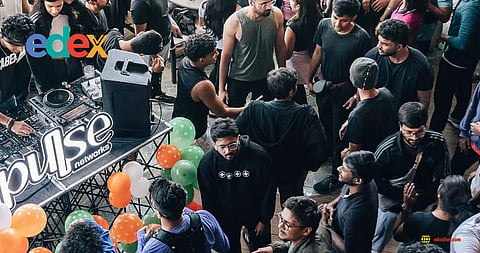

Gen Z and young millennials are adding fun to their health-conscious routines, bringing raves, that were once limited to bars and clubs, to alcohol-free spaces – cafes, restaurants and even gyms.
“It’s an experience that combines fitness activities with elements of a conventional party that you would find at a nightclub. But it’s in the morning and is a sober space,” says Sidharth Yadav, founder, Stride Run Club, a running club. “Fitness raves caught on in foreign countries post-pandemic, but I saw them start in India around a year ago, and in Bengaluru early this year. We’ve been hosting one-two every month.”
The popularity of these raves has been fuelled by social media through reels and posts of organisers and attendees. They usually have a typical routine – meeting early in the morning to exercise, usually a run, and afterwards, dancing to live DJ music.
The appeal is partly driven by a desire to socialise offline for a generation that grew up on social media. “Anywhere between 150 to 400 people show up; most of them are in their 20s and from outside Bengaluru. They want to meet new people but the traditional avenues of socialising, like apps, workplace, or other fitness events are not working for them anymore,” explains Yadav.
With many of these raves being hosted by established communities, the trust that participants already have in the organisers plays a role too. “They are curious because they’ve seen it trending on social media and when they know a particular community is hosting the rave, they feel they can enjoy without thinking twice,” says Madhu R, founder, Namma Weekend Community.
The alcohol-free nature of it too, adds a feeling of safety, evident in the fact that these raves, as Yadav notes, “have fairly equal participation of men and women. It doesn’t attach having fun to consuming alcohol and fitness is the common denominator among everyone instead.”
Prashant Paliwal, a nutrition coach and co-founder of Nuvie, has attended and hosted such raves. He adds, “Gen Z is the first to abandon alcohol on a mass scale and this gives them something fun and Instagrammable to do. People still want it to look like a party, but don’t want the after effects of alcohol.”
While run clubs are largely driving the fitness rave movement, the event often incorporates other forms of exercise in a high-motivation, sometimes competitive environment. “We do a warm-up and a two to five-kilometre run. Sometimes we do more intense workouts like Hyrox (includes a 1km run, a functional exercise, running another kilometre and repeating this eight times),” says Madhu.
Coffee and a DJ are the rewards at the end of this intense workout, but some include other fitness-adjacent treats. “We turned a regular gym into a boiler room setting where four DJs and two rappers performed. We also set up a smoothie bar. At some events, we make ice cream from our protein product,” says Paliwal.
Madhav plans to incorporate potlucks and jamming sessions while Yadav’s group has hosted events with energy drinks and baked goods on offer instead. “Even if they consume all kinds of food at the rave, it feels guilt-free because they’ve already done the fitness aspect,” notes Yadav.
As their popularity explodes, several brands and venues are using collaborations with fitness raves as a way to gain social media promotion and monetise their space during the early morning off hours.
Paliwal also points out that as raves gain popularity, fitness clubs shouldn’t forget to prioritise fitness. He says, “The only con I see is that a lot of time and energy goes into hosting these events, so these clubs are turning more into socialising clubs than actual running. Socialising should be the perk.”
But Yadav views this as an opportunity to make fitness attractive, saying, “The bottom line is promoting fitness, but talking about it alone won’t make people excited or create habits. If you sugarcoat it by wrapping a fun experience around it, people are more likely to adhere to a routine.”
(Written by Mahima Nagaraju of The New Indian Express)
